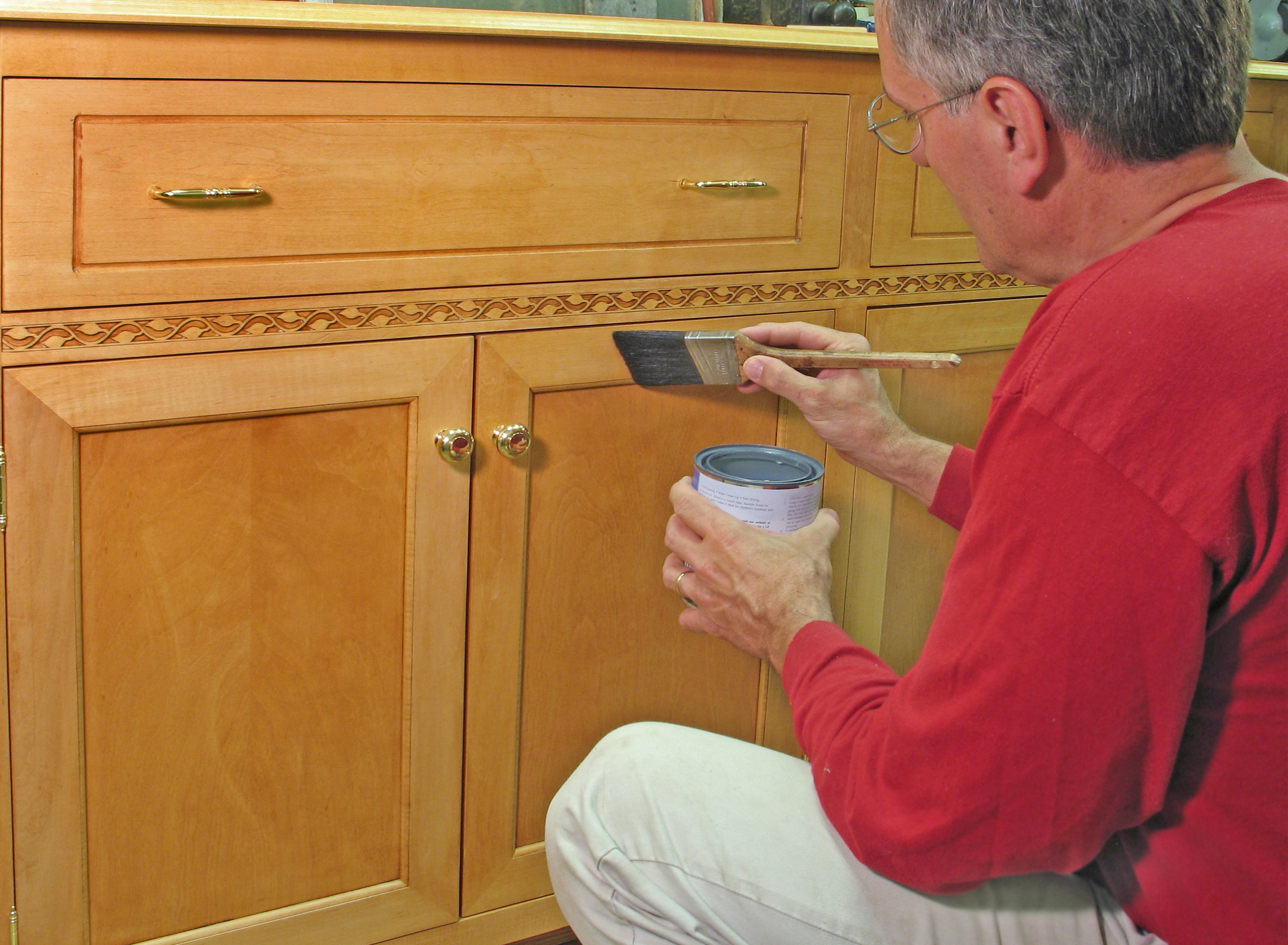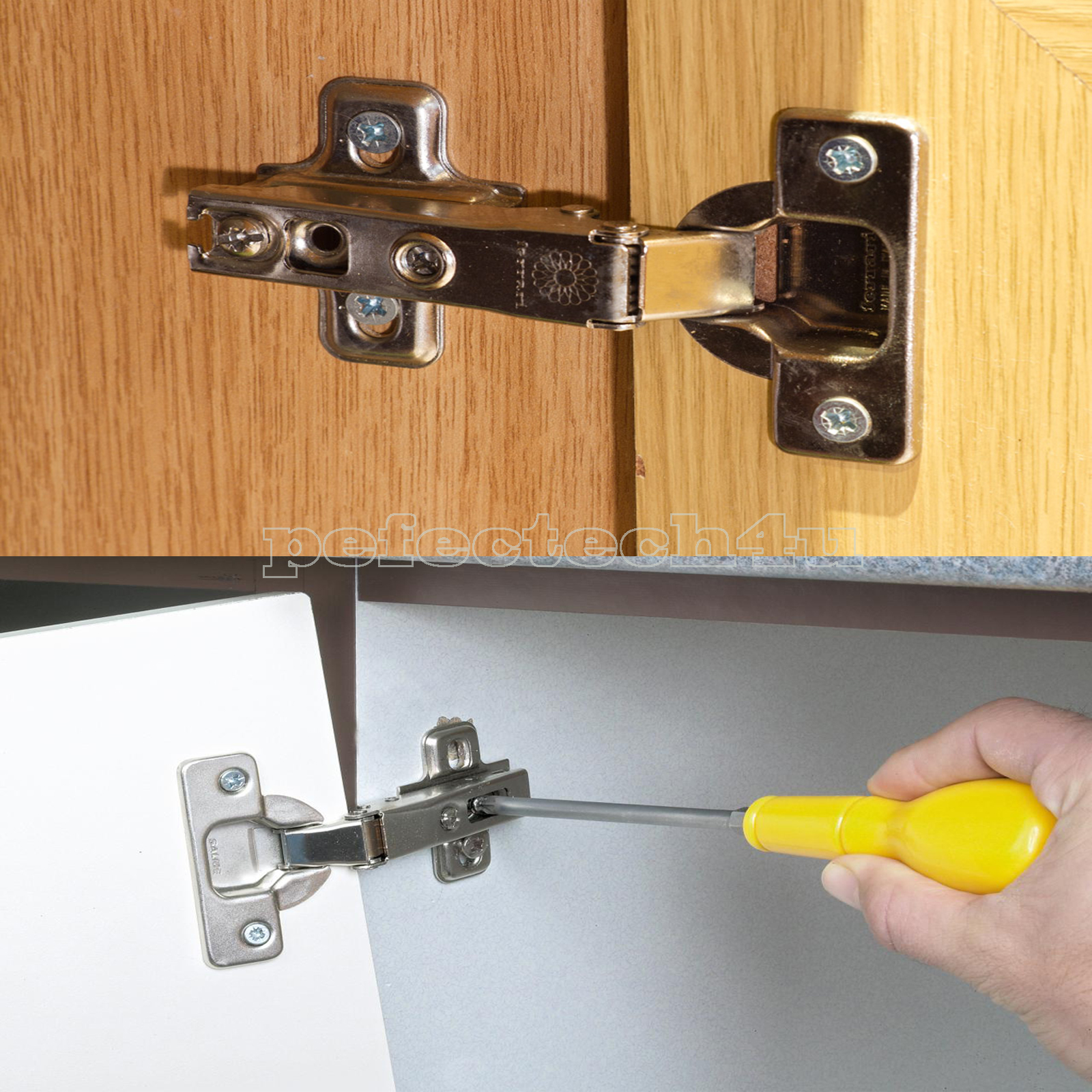Types of Paint Suitable for Cabinet Hinges: Best Paint For Cabinet Hinges

Choosing the right paint for your cabinet hinges is crucial for achieving a durable and aesthetically pleasing finish. The longevity and appearance of your repainted hinges depend heavily on the paint’s properties and the preparation of the surface. This section will explore the suitability of different paint types for this specific application, focusing on their performance characteristics and application processes.
Oil-Based Paint for Cabinet Hinges
Oil-based paints offer superior durability and excellent adhesion to metal surfaces, making them a strong contender for painting cabinet hinges. Their slow drying time allows for more even application and better flow, minimizing brush strokes. However, they require mineral spirits for cleanup, have a strong odor, and a longer drying time compared to other options. The hard, durable finish resists chipping and scratching effectively, making them ideal for high-traffic areas. The inherent properties of oil-based paints also provide a degree of rust prevention, especially when paired with a suitable primer. Proper surface preparation, including thorough cleaning and degreasing, followed by the application of a metal primer, is essential for optimal adhesion and rust prevention.
Latex Paint for Cabinet Hinges
Latex paints, also known as water-based paints, offer a convenient and low-odor alternative to oil-based paints. Their quick drying time significantly reduces project completion time, a significant advantage for larger projects. Modern latex paints are formulated with improved durability and resistance to chipping, although they may not match the resilience of high-quality oil-based paints in demanding applications. Cleaning up is easy with soap and water. However, they may require multiple coats for optimal color coverage and may not offer the same level of rust protection as oil-based paints. Preparation involves cleaning the hinges with a degreaser and applying a suitable metal primer to ensure good adhesion and prevent rust.
Acrylic Paint for Cabinet Hinges
Acrylic paints, another type of water-based paint, share many similarities with latex paints. They are also relatively easy to clean up, dry quickly, and have low odor. However, acrylic paints often offer a more flexible and less brittle finish compared to latex paints, which can be advantageous for metal surfaces that experience some flexing or movement. They are also known for their vibrant colors. Similar to latex paints, adequate preparation is key, including cleaning and priming the hinges with a suitable metal primer to prevent rust and ensure optimal adhesion. While durable, they might not be as resistant to chipping as oil-based paints in high-impact areas.
Comparison of Paint Types for Cabinet Hinges
| Paint Type | Drying Time | Chip Resistance | Ease of Application |
|---|---|---|---|
| Oil-Based | Slow (24+ hours) | Excellent | Moderate |
| Latex | Fast (1-2 hours) | Good | Easy |
| Acrylic | Fast (1-2 hours) | Good to Excellent (depending on quality) | Easy |
Techniques for Painting Cabinet Hinges

Painting cabinet hinges can dramatically enhance the look of your cabinetry, adding a touch of elegance or a pop of color. Proper preparation and technique are key to achieving a durable and professional-looking finish that will withstand daily use. This section details the steps involved in painting hinges, ensuring a flawless result.
Surface Preparation
Thorough surface preparation is paramount for optimal paint adhesion and a long-lasting finish. Neglecting this step can lead to peeling or chipping paint, ruining the aesthetic appeal and requiring repainting. The process involves cleaning, sanding, and priming the hinges.
- Begin by gently cleaning the hinges with a degreaser to remove any grease, grime, or old paint residue. A soft cloth or brush is ideal for this step, ensuring you don’t scratch the metal surface.
- Once clean and dry, lightly sand the hinge surfaces with fine-grit sandpaper (around 220-grit). This creates a slightly rough surface, improving paint adhesion. Avoid excessive sanding, which could damage the hinge mechanism.
- After sanding, wipe away any dust particles with a tack cloth. A clean surface is crucial for a smooth, even paint application.
- Apply a thin, even coat of metal primer specifically designed for adhesion to metal surfaces. This layer acts as a bonding agent between the metal and the topcoat, ensuring a more durable finish and preventing rust.
Paint Application Methods
Choosing the right application method depends on your skill level, the number of hinges, and the desired finish. Both brushing and spraying offer distinct advantages and disadvantages.
- Brushing: This method is ideal for smaller projects or those with intricate hinge designs. Use a high-quality, small artist’s brush with fine bristles to apply thin, even coats. Multiple thin coats are preferable to one thick coat to avoid drips and ensure even coverage.
- Spraying: Spray painting is efficient for larger projects, offering a smooth, even finish. Use a spray paint specifically formulated for metal. Remember to wear appropriate safety gear, including a respirator and eye protection. Maintain a consistent distance from the hinge to avoid runs and ensure even coverage.
Achieving a Professional Finish
Several techniques contribute to a professional-looking finish on your painted cabinet hinges. These steps ensure a long-lasting and aesthetically pleasing result.
- Multiple Thin Coats: Applying several thin coats, allowing each to dry completely before applying the next, is far superior to applying one thick coat. This method minimizes drips, runs, and brush strokes, leading to a smoother, more even finish.
- Clear Coat Protection: Applying a clear coat sealant after the paint has completely dried adds an extra layer of protection against scratches and wear, extending the life of your paint job. Choose a clear coat compatible with your chosen paint type.
Masking and Protection
Proper masking is crucial to prevent paint from spilling onto surrounding surfaces. Different masking techniques are required depending on the hinge design.
Best paint for cabinet hinges – Imagine painting a set of hinges attached to a cabinet door. For hinges with exposed screws, carefully apply painter’s tape around the screw heads and along the edges of the hinge where it meets the door. Use a small, precise brush to carefully paint the hinge itself, avoiding contact with the tape. For hinges with more complex designs, consider using smaller pieces of tape to mask off specific areas. For example, you might need to use small strips of tape to mask intricate details on an ornate hinge. Visualize using a thin, flexible masking tape to cover areas where you don’t want paint, creating a clean line between the painted hinge and the surrounding wood. After the paint dries, carefully remove the tape to reveal a sharply defined, professionally painted hinge.
For hinges that are removed from the cabinet door before painting, you can simply lay them on a protected surface covered with newspaper or a drop cloth. This makes painting easier and lessens the risk of accidental spills onto the surrounding surfaces.
Choosing the Right Paint Color and Finish for Cabinet Hinges

Selecting the perfect paint color and finish for your cabinet hinges is a crucial detail that can significantly elevate the overall aesthetic of your kitchen. A well-chosen paint job can subtly enhance the existing design or dramatically transform the look, depending on your goals. The interplay of color and finish creates a visual impact that should be carefully considered to achieve the desired effect.
The right paint choice will depend heavily on the existing cabinet style and the overall kitchen décor. For instance, a modern kitchen with sleek, minimalist cabinets might benefit from a contrasting pop of color on the hinges, while a traditional kitchen might require a more subdued, complementary tone. The finish, whether matte, satin, gloss, or semi-gloss, also contributes significantly to the final appearance, affecting how light reflects and how the color appears.
Paint Colors and Finishes for Different Cabinet Styles, Best paint for cabinet hinges
Modern kitchens often feature clean lines and a minimalist aesthetic. Painting cabinet hinges a bold, saturated color like deep teal or a vibrant emerald green can add a striking contrast against lighter-colored cabinets, creating a focal point that accentuates the modern design. A high-gloss finish would further amplify this effect, adding a touch of luxurious shine. Alternatively, a matte black finish on hinges in a modern white kitchen would offer a sophisticated, understated elegance. In contrast, traditional kitchens typically favor warmer tones and more ornate details. Here, a subtle antique brass or a muted sage green would complement the overall style without overpowering it. A satin or semi-gloss finish would be appropriate, offering a slightly more reflective surface than a matte finish without the high shine of gloss. Rustic kitchens, with their emphasis on natural materials and textures, might benefit from hinges painted in a weathered grey or a deep brown to match the overall palette. A slightly distressed finish would further enhance the rustic charm, mimicking the aged look of antique hardware.
Selecting Paint Colors to Complement Existing Hardware and Décor
Choosing paint colors that either complement or contrast with your existing kitchen décor is key to a cohesive and visually appealing result. Careful consideration of the existing color palette and the overall style is essential.
- Analyze the existing color scheme: Identify the dominant colors in your kitchen—wall colors, countertops, backsplash, and existing cabinet hardware. Note the undertones (warm or cool) of these colors.
- Consider color harmony: Choose a hinge paint color that complements the existing colors. Analogous colors (colors next to each other on the color wheel) create a harmonious and soothing effect. For example, if your cabinets are a warm beige, consider painting the hinges a soft, muted gold or a light brown.
- Embrace color contrast: For a more dramatic look, select a hinge paint color that creates a strong contrast with the existing colors. Complementary colors (colors opposite each other on the color wheel) can create a vibrant and energetic feel. For instance, if your cabinets are a light grey, a bright yellow or a deep orange could add a pop of unexpected color.
- Match or subtly alter the existing hardware: If your cabinet knobs or pulls are a specific metallic finish (like brushed nickel or polished brass), consider painting the hinges a similar metallic shade to maintain visual consistency. Or, subtly alter the shade to create a nuanced effect, perhaps using a slightly darker or lighter tone of the same metallic color.
- Test the paint colors: Before committing to a full paint job, always test the paint color on a small, inconspicuous area of a hinge to see how it looks in your specific lighting conditions. This will prevent costly mistakes and ensure you are happy with the final result.
